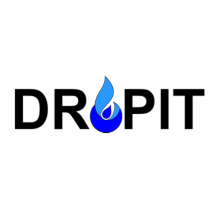AS-02: High-order numerical methods for multi-component in-compressible flows in pools
Diffuse interface approaches are numerical strategies developed to deal with multi-component flow problems. As distinguish feature, these approaches implicitly capture the interface position through a smooth (and possibly sharp) variation of a suitable field variable across the interface. The advantage of the interface capturing strategy is that the interface reconstruction is not required. Accordingly, complex 3D interface topologies as well as coalescence/break-up of droplets can be handled at no extra cost. However, the control of interface spreading is crucial to ensure a meaningful macroscopic description of the flow.
Within the current project we aim to develop an accurate simulation tool for the investigation of multi-component incompressible flow problems featuring droplet/liquid interaction. In this context, the coupling of a diffuse interface approach with a discontinuous Galerkin (dG) high-order space discretization is very attractive. Indeed, the interface resolution can be improved by increasing the polynomial degree of the field variable expansion. Moreover, dG methods have been successfully employed in those flow applications where robustness and high-fidelity representation of physical quantities is essential such as Direct Numerical Simulation (DNS) and Implicit Large Eddy Simulation (ILES) of turbulent flows.
During the first-phase of the DROPIT project we devised a fully implicit dG discretization of the Variable Density Incompressible (VDI) flow model. VDI augments the set of incompressible Navier-Stokes equation, comprising the divergence free constraint and the momentum equation, by the mass conservation equation. Simultaneous verification of mass conservation and isochoric motion implies that density is a purely advected property that can be employed as a phase field variable for diffuse interface capturing. In this dG solver specific care is devoted to the control of numerical oscillations of the density field, which is achieved by means of a local artificial viscosity term inspired by shock capturing techniques. The pressure-velocity coupling is defined by means of an artificial compressibility perturbation of the inviscid problem introduced at inter-element boundaries. The accurate integration in time is achieved using high-order linearly-implicit Rosenbrock-type Runge-Kutta schemes. The image shows the capability of the developed code to deal with the liquid-liquid components interaction. As initial condition two dams immersed in air (white component) and containing water (blue component on the left) and oil (red component on the right) break. Under the effect of the gravity field (downward acceleration) the liquid fronts move and collide generating a wave.
For the second-phase of the DROPIT project we plan to implement a more general model based on the phase field approach that allows to generalize to multi-component flows featuring both incompressible and compressible isothermal fluids. As advantage over the VDI flow model, the phase field model is a diffuse interface approach in which the thickness of the interface is a prescribed parameter and the surface tension contribution arises directly from the model.
Since comparison with experimental and numerical results is of fundamental importance, the cooperation made available by the DROPIT project is playing a key role for this work. Collaborations with other subprojects, such as SP-A3 and SP-B4, have been already started and new collaborations are planned to start for the second phase.
AS-05: A locally-refined quadtree finite-volume staggered-grid scheme for free flow e.g. above a droplet-shaped obstacle or above a porous medium
If a droplet builds an obstacle to free flow (as it could e.g. be considered in SP-B6, in which droplets form on the wall of a free-flow channel), the simulation of the flow around the droplet should ideally reflect the droplet shape as smooth as possible. Furthermore, in the flow over a droplet-shaped obstacle, a vortex may develop after the droplet. Vortices are one example of flow patterns of special interest, which can be best represented when the free-flow simulation has a high spatial resolution in the region of the vortex. Another application, that we have in mind, is the coupling between free flow and flow through a porous medium, which plays a crucial role in a broad variety of technical, environmental and medical systems. There, a high resolution of free flow is required for example in the region where the pore of a pore network touches the free flow.
We use the open-source simulator Dumux, which models a single-phase multi-component non-isothermal free flow by the Navier-Stokes equations. The free flow can be a flow with variable density or viscosity. Coupling to the equations describing the porous-medium flow is implemented monolithically. The porous medium may be described on the representative-elementary-volume scale or as a pore-network model. To ensure local conservation of mass and momentum, a finite-volume scheme is applied. A staggered arrangement of the unknown variables helps to avoid spurious pressure oscillations. Grids are axiparallel and consist of rectangular grid cells.
The contribution of this project is the implementation of a quadtree local refinement method for the two-dimensional Navier-Stokes equations. A refinement ratio of 1:2 is used and we choose to have two velocity degrees of freedom at the interface between coarse and fine grid cells. Furthermore, we use subsequent linear interpolations to complete stencils. We can ensure local mass and momentum conservation by the following: There are interfaces at which one coarse control volume touches two fine ones. There, the momentum flux out of the coarse control volume is in general not equal to the flux into the fine ones. We can enforce the method to be conservative by setting the coarse flux equal to the negative sum of the fine fluxes.
We are able to successfully apply the local refinement method to the academic example of a supergaussian velocity distribution and a zero pressure. There, we get smaller pressure and velocity L2 errors e.g. with 6120 degrees of freedom distributed on a quadtree grid than with 6165 degrees of freedom distributed on a 45x45 uniform grid.
AS-06:Oil mist deposition in textile filters – from nano CT-Scans to CFD simulations
Today, liquid aerosols are generated in many industrial processes like machining, manufacturing of catalysts or in pneumatic compressors. Liquid aerosols may be harmful since small droplet may enter the respiratory system and cause lung cancer, allergies, or other diseases. Also, due to the recent COVID-19 outbreak, aerosols containing viruses are classified as dangerous. Liquid aerosol filtration is a multi-scale process making modeling and CFD simulation extremely challenging due to the complex nature of the filtration process itself. On the micro-scale, fibers and droplets are resolved and filtration efficiency can be predicted. However, these micro-scale simulations are restricted to small sections of the filter medium. In order to calculate the pressure loss of the whole filter over the filter life time, a macro-scale simulation is needed. Therefore, averaged parameters (porosity, permeability) and constitutive relationships (relative permeability – and capillary pressure – saturation relationship) need to be obtained from the micro-scale. Since on the macro-scale, droplets and fibers are not resolved, the deposition has to be modelled by a source term.
The main objective of this sub-project is the development of a coupling concept linking the filtration simulation on the micro scale to the macro scale simulation on the scale of a complete filter.
We plan to reach this objective in the following steps
- Geometrical characterization of currently used filter materials as geometrical input of the flow and filtration simulations on the micro scale by means of µCT scans.
- Determination of averaged parameters and constitutive relationships for the macro-scale model based on µCT scans and micro-scale simulations.
- Development of an Eulerian-Lagrangian CFD model for liquid aerosol deposition on clean fibrous filter media including interception, impaction, and diffusion as separation mechanisms.
- Development of a volume-of-fluid based model for droplet deposition on mixed-wet fiber systems.
- Measurement of the efficiency and pressure loss of the scanned filter media and validation of the micro-scale model.
- Create efficiency / reintrainment data sets as a basis for a macro-scale source term depending on saturation and local Darcy velocity of a macro-scale grid cell.
- Integration of these data sets in the macro-scale model to describe droplet deposition depending on droplet distribution, mass flux, macro-scale filter geometry as well as the saturation and Darcy velocity of each macro-scale grid cell.
AS-08: High Order methods for finite elastic deformations
The associated project SP-AS08 aims at the development of computational modelling strategies for the simulation of stretch and extrusion blow moulding, two manufacturing processes conceived for the mass production of hollow boxes with thin walls such as plastic bottles for beverage packaging.
The final goal is predicting the mechanical properties of molded products and optimizing the parameters of the manufacturing process. Handling of elasto-visco-plastic materials undergoing large deformations requires robust and accurate numerical methods: the BR2 Discontinuous Galerkin (DG) formulation and the Hybrid High-Order (HHO) method are our best candidates.
DG and HHO formulations allow to deal with severe mesh distortion and grading induced by large deformations, high-order accurate solutions can be achieved by increasing the polynomial degree and efficient hp-multigrid solution strategies are available. Furthermore, the contact between the hot polymer preform and the mould can be achieved by introducing Lagrange multipliers on the boundary of the computational domain.
Further research efforts might be required to improve constitutive laws and for modeling the fluid-structure interaction between pressurised air and moulted polymer.
AS-11: Direct Numerical Simulation of Complex Drop-Wall Interactions with FS3D
Droplet-Wall interactions are prevalent in everyday life as well as technical systems, ranging from pesticide application to spray cooling processes. The impact on smooth surfaces was investigated intensively in the past and in recent years the focus changed to more complex systems. Of particular interest is the impact on structured surfaces as they can be used e.g. to modify the wetting behavior. Another noteworthy example is the addition of a second immiscible liquid phase to the impacting drop. Depending on the interfacial energies, stable configurations will have two or three interfaces. Oil remediation and cell printing are examples where such a ternary system plays a central role. Direct Numerical Simulations can help in understanding and predicting these processes. However, especially the contact line dynamics still pose a challenge for the simulations. Developing appropriate methods for these two scenarios is therefore the main goal of this project.
At the Institute of Aerospace Thermodynamics, a multiphase flow solver is being developed for over 25 years now. The software, called Free Surface 3D (FS3D), will be extended within this project. It is based on the Finite Volume method and uses the Volume-of-Fluid method to track the phase distributions. FS3D is validated for many applications including drop-film interactions and drop oscillations. To simulate the aforementioned complex drop-wall interactions, two objectives can be identified:
- Methods for the simulation of drop impacts on structured surfaces with varying wettability will be implemented and validated. The focus will be on regularly structured surfaces like cubic pillars in the sub-millimeter range. A collaboration with SP-B1will be sought to study such structures both numerically and experimentally.
- Based on the first step, the methods will be adapted to two immiscible liquid phases in contact with a smooth wall. Two special configurations, the core-shell configuration as well as the Janus drop-configuration will be emphasized.
Spokesperson

Bernhard Weigand
Prof. Dr.-Ing.Spokesman for DROPIT, University of Stuttgart

Gianpietro Elvio Cossali
Prof. Dr.Spokesman for University of Bergamo






